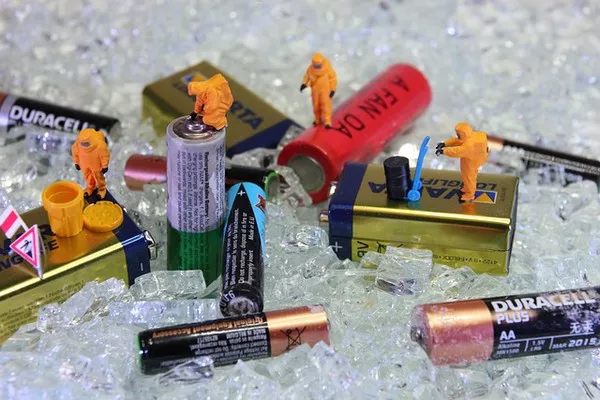A NASA-developed technology is making significant strides in enhancing the safety of lithium-ion batteries by better understanding thermal runaway events, potentially leading to safer battery packs.
Lithium-ion batteries are known for their high energy density, which requires meticulous control over their charging and discharging processes to maintain thermal stability. When a battery cell releases stored energy too quickly and heat accumulates faster than it can be dissipated, thermal runaway can occur. This phenomenon can release substantial amounts of gas and heat, posing serious fire risks.
In 2023, NASA’s Johnson Space Center introduced the Small Fractional Thermal Runaway Calorimeter (S-FTRC), a device designed to measure the total thermal energy yield of a small-format lithium-ion cell during thermal runaway. The S-FTRC captures the heat generated by chemical reactions in a cell experiencing thermal runaway and also measures the energy dissipated through conduction and vented gases. These gases, which can be toxic, hot, and corrosive, are released rapidly and can amount to as much as 3 liters per amp-hour (Ah). For example, a 200 Ah cell can emit up to 600 liters of gas in mere seconds.
Expanding on this technology, NASA’s Johnson Space Flight Center developed a larger version, the Large Fractional Thermal Runaway Calorimeter (L-FTRC), to test and characterize larger format cells. KULR Technology Corporation, based in San Diego, licensed this L-FTRC technology from NASA. KULR’s adaptation of NASA’s methodology allows for the examination of the largest lithium-ion battery cell formats, determining total energy yield, fractional energy yield, and mass ejection distributions. It also enables the extraction of gas samples for third-party analysis. This capability has been applied to tests on 200 Ah high-energy nickel manganese cobalt prismatic-format lithium-ion battery cells for a major global automotive OEM.
Understanding thermal runaway events is crucial because each incident can vary significantly. To enhance battery safety, engineers need detailed data on the total energy yield and the energy dissipation paths during a thermal event. The FTRC, initially developed by NASA, remains the only calorimeter method providing such comprehensive data.
To address the needs of mid-sized (30 Ah to 70 Ah) and very large cells (up to 200 Ah), KULR has made the original S-FTRC design modular. The company faced challenges in testing larger cells, both in size and capacity, prompting further research and development to measure the flow of gases produced during thermal runaway. One critical gas in this context is hydrogen fluoride, whose concentration is vital for certifying lithium-ion cells for use around people.
KULR’s enhancements and the continued development of thermal runaway characterization technologies promise to yield safer and more resilient battery systems, addressing both commercial and consumer safety concerns.

